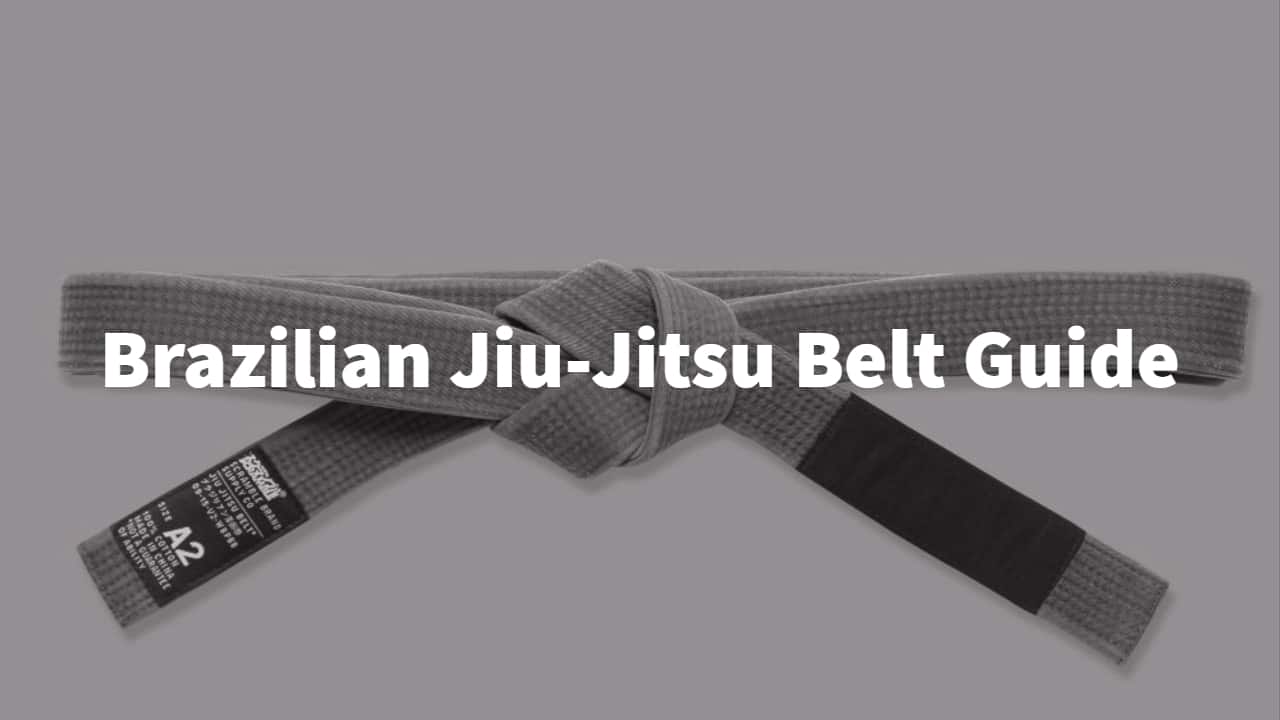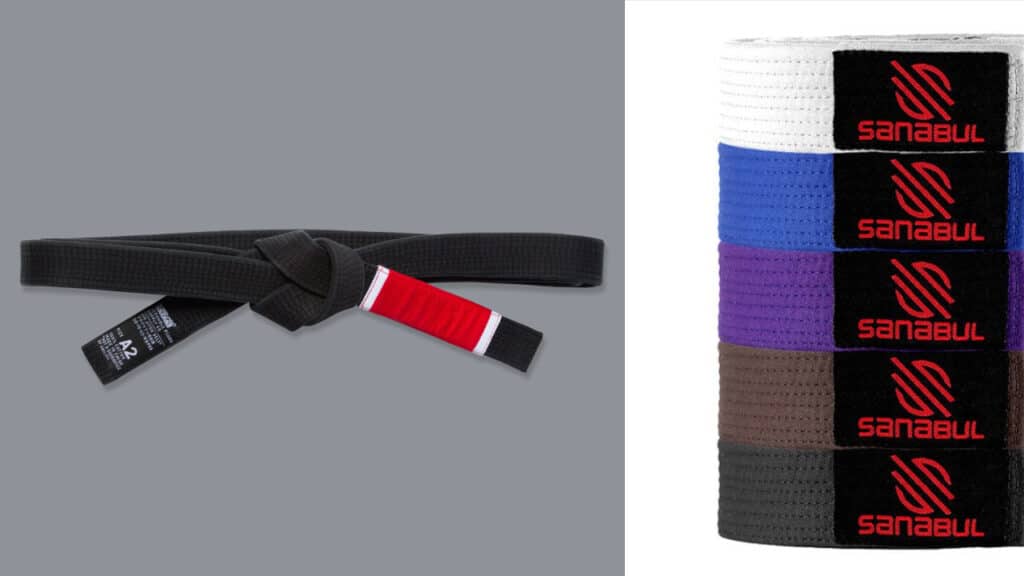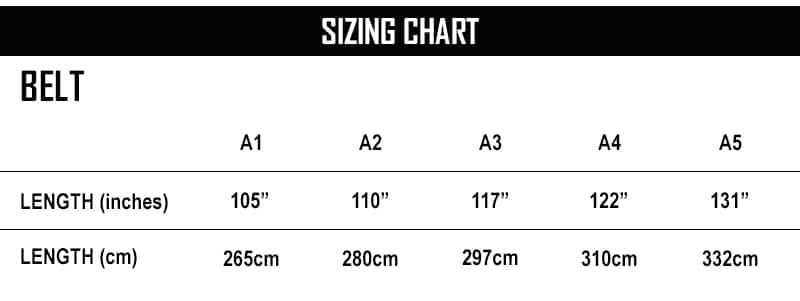
We see this question pop up from time to time. So, we sat out to do some research on our own to find the best BJJ belt in the market for your money.
Everyone knows that black belt is the highest in Brazilian Jiu Jitsu hierarchy, and it tends to carry a bit of a social status as well. But behind the status symbol of BJJ belt, you still need a belt that follows competition guidelines, is the right color for your skill grade, and is a high quality design.
Over the past few years, we've tried a handful of different belts and taken reviews from some of our fellow practitioners and have compiled them into our buyer's guide below. We'll be providing you with honest reviews about various different BJJ belts from different brands.

The Sanabul belt is thick, stiff and competition legal. Also, the Sanabul BJJ Belt comes with anti-odor and antimicrobial treatment. This helps reduce the spread of fungal or bacterial infections along with odor. The Sanabul belt also comes with a sleeve bar for ranking stripes. Also, it is available in the standard jiu jitsu colors: white, blue, purple, brown and black.
Features:

The Tatami belt is thick, sturdy and 100% cotton. Tatami fightwear is known for producing solid gear. Their BJJ belts are no exception, they are durable, high quality and most of all keep your gi in place.
Features:

Kingz Gold Label BJJ Belts are high quality and made from 100% premium cotton with a nice gold label. The Kingz Gold LAbel belt fits good and is very sturdy.
Features:

Scramble belts are high quality like their other fight wear and casual products. These belts come pre-washed, super soft and flexible. They are easy to tie and stay on during tough roll sessions.
Features:
In conclusion, these are some of the best BJJ belt brands on the market today. You can’t go wrong with either of the belts above.
In the early 1900s, Kano Jigoro introduced the use of belts in the martial arts. This replaced the need to train in more formal kimonos. In 1914, Kano's student Mitsuyo Maeda arrived in Brazil. At the time they only used white and black belts. With the white belt signifying purity and simplicity and the black belt being the opposite.
It was thought within the Jiu-Jitsu community that every student started off with a white belt. Then it gradually darkened over time from the blood, sweat, tears, and grime of training. While that sounds cool there is no real historical evidence to suggest this happened. This has become more of a myth over the years.
It is commonly believed that Mikonosuke Kawaishi was the first person to introduce additional colored belts in the 1930s. The thought is that the additional belts would improve retention within the sport and show progress. The goal was to make jiu-jitsu more structured and friendly to the public.
The White Belt is the first belt within Brazilian Jiu-Jitsu. The rank is held by any practitioner new to the art. It is commonly believed that a white belts training should emphasize escapes and defensive positioning since a white belt will often fight and end up in bad positions. At this level, the most important thing to remember is to relax, get conditioned, and learn how to move while on the ground.
This is the second adult rank in BJJ. Students gain a wide breadth of technical knowledge and have spent hundreds of hours on the mat to learn how to implement attacks, sweeps, and transitions efficiently. At this level, jiu-jitsu practitioners focus heavily on defense. Roger Gracie has been quoted saying what makes him so good is, "I built my game off a solid defense." At this level, students practice their escapes from major positions and classic submissions.
Purple belt is the intermediate rank in Brazilian jiu-jitsu. At this level, practitioners have typically gained a large amount of knowledge and have learned to use momentum. At this level, jiu-jitsu practitioners have learned to leverage movement and momentum to achieve many of their objectives. During this period many BJJ practitioners become a nightmare to submit and master escapes.
Brown belt is the highest ranking color belt in BJJ. It typically takes at least 5 years of dedicated training to achieve. During this time it is thought to be at time for honing techniques. During this time the focus is typically on playing offense with little concern about being unable to escape bad positions or getting caught in submissions.
This is also a time when many jiu-jitsu practitioners decide to start teaching other lower level students.
As with many other martial arts, the black belt is the highest common belt within BJJ. This belt is a symbol of expert technical and practical jiu-jitsu skills. At this level practitioners have a deep intuitive understanding of the game and can instinctively 'feel' their way through most matches. Most importantly the black belt is humble, friendly and respectful.
Unlike other martial arts, a belt in jiu-jitsu signifies that you invested years of training and competition to achieve higher ranks. It is a reflection of the hard work you've put into the sport. Therefore, you will want to look at the characteristics of different belt brands to find the best belt for your gi.
When looking for the best belt, you need to consider the thickness and durability. You want a belt that is thick so it will hold up during competition and hard roll sessions. Thinner belts won't last as long and you may find yourself buying several belts. However, a durable belt will fit securely and hold up to the constant grappling and gripping that happens in jiu-jitsu.
As you look for different BJJ belts you will notice some are made to feel looser and softer than other belts. In order to find a good belt for you, it's important to know which type you prefer.
Looser BJJ belts are easier to fit and tie on, many practitioners prefer a stiffer belt. These tend to feel very durable and stay tied longer.
However, some people prefer softer belts. They believe a soft or looser belt will allow for more mobility and greater movement. In the end, it comes down to personal preference and understanding what your preferences are.
In order to find the best belt for you, you need to know what size you are.
